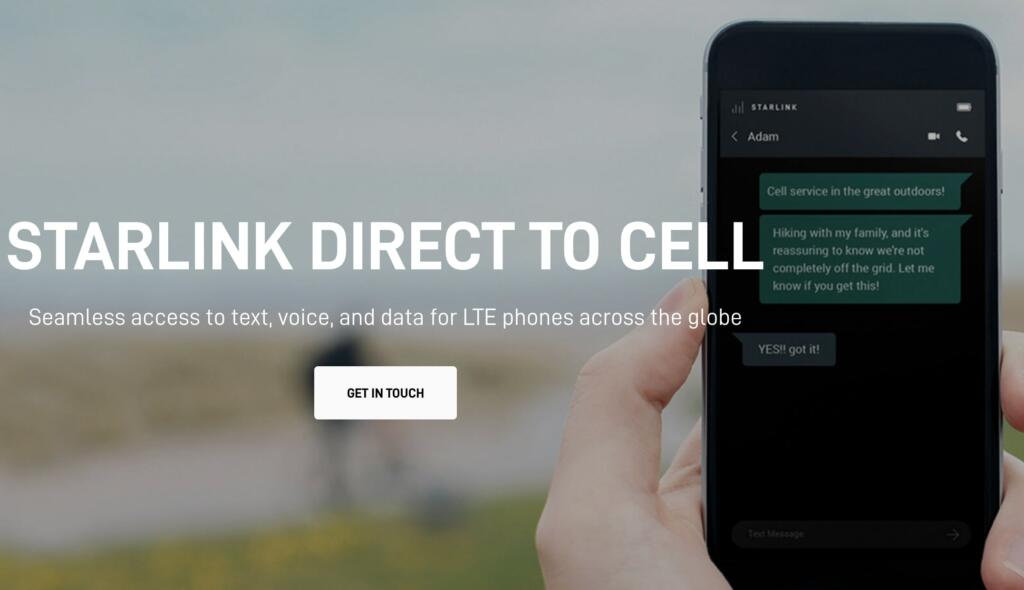Starlink Direct to Cellphone supports about 7 Megabytes per beam and the beams are very big.
Starlink v2-Mini satellites have three downlink antennas and one uplink antenna, each capable of eight beams and two polarizations. This means that each satellite has a total of 48 beams down and 16 up. It is unclear how many of the beams are for Direct to phone service and how many are for high bandwidth internet.
Of 21 Starlink satellites launched tonight six feature direct-to-cell capabilities. SpaceX plans to launch approximately 840 direct-to-cell sats over the next 6 months and more later in time.
90% of the Earth is unreachable for service by any cellphone company.
Starlink provides service to any area where you can see the sky.
They will start with text messaging and then move on to voice and data.
Voice over IP usually have at least 85 kbps for voice calls. This would mean about 80 simultaneous voice calls using 7 Megabytes per beam.
The current timeline is text service starting in 2024, voice and data in 2025, and IoT (internet of things) service in 2025.
The previous 880 or so Starlink V2 mini launched in 2023 did not have direct to phone capabilities. New Starlink V2.X mini have the direct to phone capabilities.
Documents released in 2022 revealed that the Direct to Cell system will be able to provide theoretical peak speeds of up to 7.2Mbps peak upload (Earth-to-Space) over 1.4MHz or 5MHz bandwidth channels per beam, respectively, and up to either 4.4Mbps or 18.3Mbps on the downlink (Space-to-Earth) over the same bandwidth channels per beam using LTE (4G) technology.


First launch of Starlink Direct-to-Phone satelliteshttps://t.co/Bamfpvlioz
— Elon Musk (@elonmusk) January 3, 2024

Starlink Direct to Cell supports "~7Mb per beam and the beams are very big."
How many simultaneous satellite Direct to Cell voice conversations can each ~7Mb of capacity support?
Some of the traffic will be messages, but assume the traffic is all voice.
How big is each beam? pic.twitter.com/2JzuDUDiQL
— Tren Griffin (@trengriffin) January 3, 2024

Brian Wang is a Futurist Thought Leader and a popular Science blogger with 1 million readers per month. His blog Nextbigfuture.com is ranked #1 Science News Blog. It covers many disruptive technology and trends including Space, Robotics, Artificial Intelligence, Medicine, Anti-aging Biotechnology, and Nanotechnology.
Known for identifying cutting edge technologies, he is currently a Co-Founder of a startup and fundraiser for high potential early-stage companies. He is the Head of Research for Allocations for deep technology investments and an Angel Investor at Space Angels.
A frequent speaker at corporations, he has been a TEDx speaker, a Singularity University speaker and guest at numerous interviews for radio and podcasts. He is open to public speaking and advising engagements.


This is great. If you will be hiking very remote areas or doing mountaineering,.. you won’t need to buy dedicated sat phone.
SO, if you are standing outside, because it apparently does not allow you to receive or send a text or phone call if you are indoors, and one of the satellite beams of indeterminate size passes over you from one of the eventual 840 satellites, you might be one of 80 people that can place a phone call (away from trees and buildings while standing outside) until the satellite passes out of range. I believe that if the beam size/coverage area was actually adequate, let alone big, they would have mentioned the size of coverage from the satellite beam in their press announcements. I don’t know how much T-mobile is paying Space X to reach those 67,200 potential voice customers (840×80) or perhaps 10 times as many customers for texting, but if it’s not profitable for T-mobile, the payments won’t continue. That being said, its a great option/last resort for T-mobile customers who wander the wilderness and don’t want to buy and carry a Garmin or Bullitt’s standalone Motorola Defy Satellite Link or a sat phone or any Iphone 14 or above that all use the Iridium network of satellites to send texts for help. I believe they could have a real winner of a product if they can figure out a way for cell phone users to first link to an existing and nearby home Starlink antenna from an existing Starlink customer and piggyback the signal on their equipment. Someone at Space X needs to explain the business plan, costs vs profits, a lot better.
I got the math wrong on the total number of potential T-mobile customers/users per satellite. Without knowing how much bandwith is going to cell phones, its unknowable right now.
Phone calls are Voice Over IP and they are compressed. Also text messages are virtually free in terms of bandwidth.
also there is the point that if a certain amount of customers are in a given area that the justification for hard wired infrastructure in that area is then justified. Wonder how this will work for Burning man lol